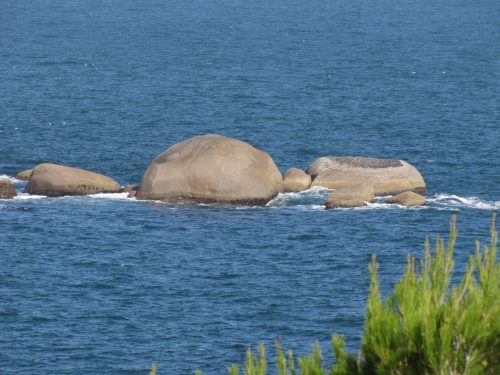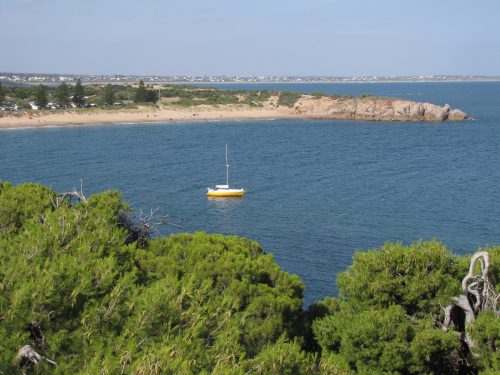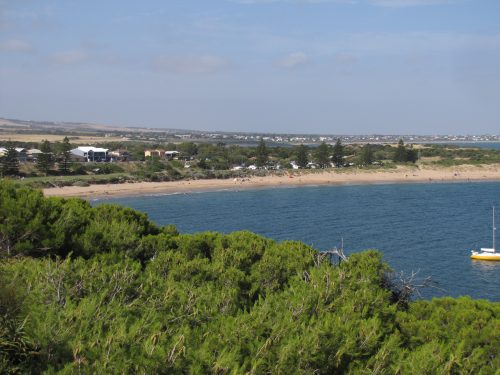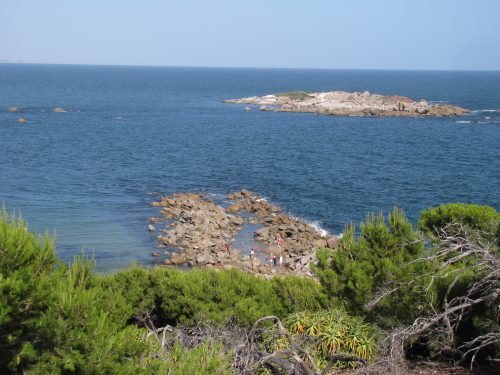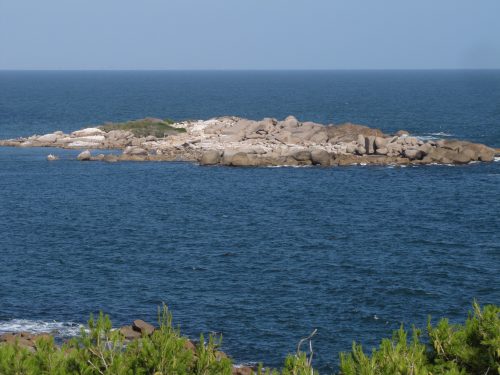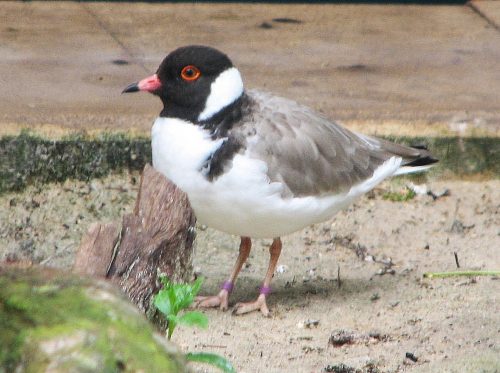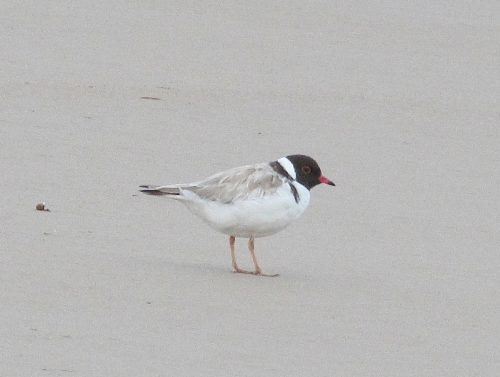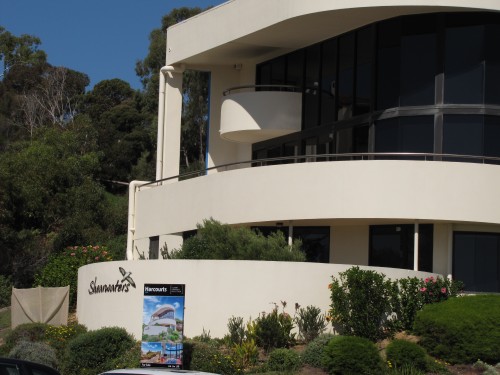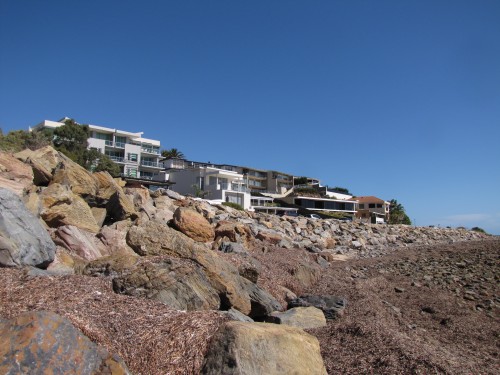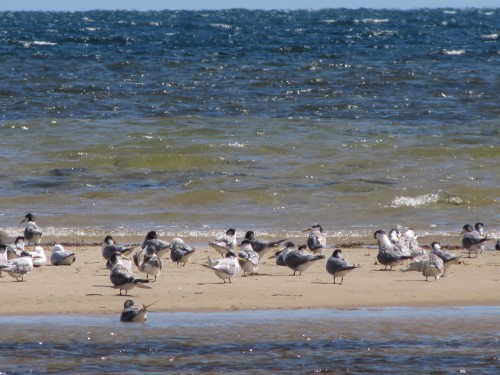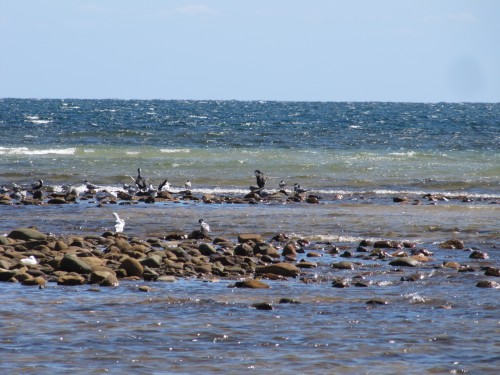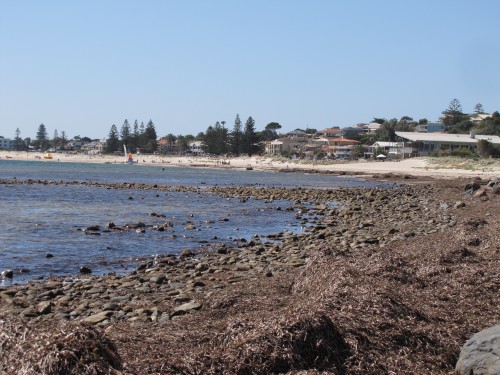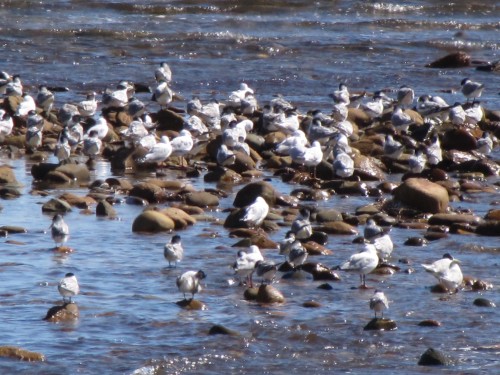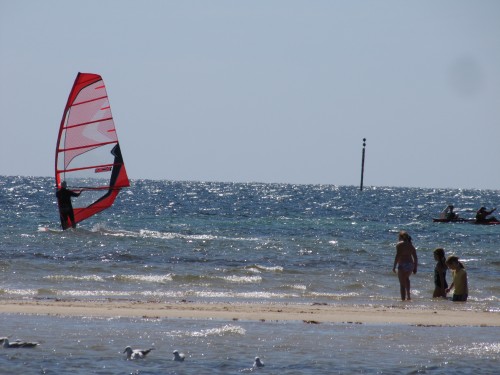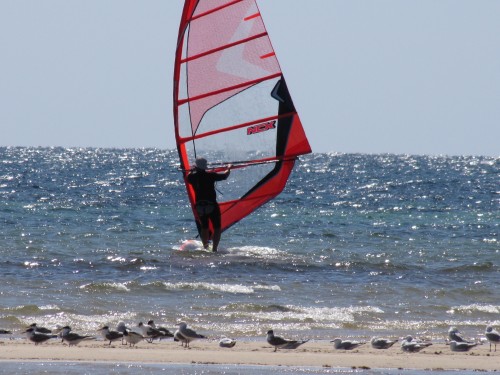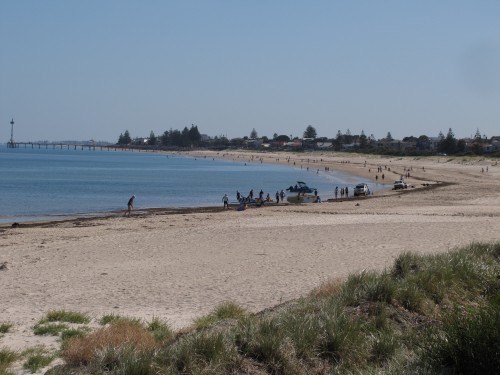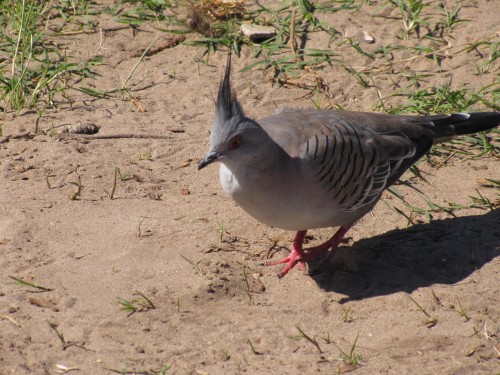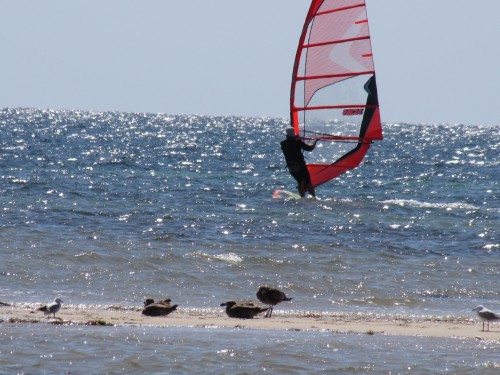A short visit to Horseshoe Bay, Pt Elliot
Last week I wrote about my visit to Horseshoe Bay at Pt Elliot here in South Australia. This day trip from home here in Murray Bridge was to celebrate our anniversary in a relaxed and enjoyable way.
When we arrived at the picturesque seaside town of Pt Elliot on the south coast, parking at Horseshoe Bay was all taken up. This is not surprising because it was the middle of the school holidays as well as being at the height of the summer holidays here in Australia. The beach was being well used and it was crowded like I had never seen it before. The weather was perfect for swimming and lounging around on the sand, so it was not surprising that it was crowded. The nearby caravan park was also quite full, adding to the crowd on the beach.
When I couldn’t get a park near the beach I decided to try another spot nearby. We are spoilt here in South Australia because we like to park close to the beach and usually that is not a problem. We have many wonderful beaches and ample parking is available at most of them. And, unlike some I have been to in Sydney, for example, there are no parking meters to contend with. Despite this, there was not a single park – except high up on the overlooking cliff well away from the beach where we wanted to have our afternoon tea.
So, I drove the short distance to the local obelisk overlooking the bay. The car park there was almost empty, so I parked where we had a great view of the water, the bay and the nearby rocky islands in the bay. We sat in the car enjoying the vista in front of us, and the cool breeze made life very enjoyable. We enjoyed our cup of tea and home-made biscuits while soaking in the view – see today’s photos to understand what we enjoyed.
I didn’t get a chance to take many bird photos, except for the lovely shots of a Silver Gull I featured on another post here.
Further reading:
An appeal to save our Hooded Plovers
Here in South Australia, there has been some interest generated in the media in recent weeks about the plight of the Hooded Plover. A pair of this species was found to be nesting on one of our popular beaches. There was much concern over protecting the eggs from damage or predation.
This tiny bird is widespread along the coast of South Australia and all of southern Australia, including Tasmania. Nowhere is it common, and everywhere it is threatened. It is estimated that fewer than 2500 of these lovely birds exist. And during the summer months, when they nesting, they are most vulnerable.
During the summer months, when they nesting, they are most vulnerable. They make their nest by making a small depression in the beach sand. In this hollow, they lay and hatch their eggs. Surveys have shown that as few as only 2.5% of eggs actually make it to adulthood. That is a shocking statistic; it is NOT a typo.
The eggs can be damaged in many ways:
- The eggs can be trampled on by people, dogs, horses or vehicles (we still have some beaches with car access here in South Australia – all in Hooded Plover nesting areas).
- Overheating when the eggs are exposed to the burning sun after the adult is scared from the nest.
- Eggs left too long and becoming too cold without the warmth of the adult sitting. This also happens when the adult is chased from the nest by the presence of humans, dogs, and other animals.
- The eggs can also be taken by predators such as foxes, cats, ravens, magpies, gulls and eagles.
If the eggs survive to hatch, the young can die:
- By being run over by vehicles, or stepped on by humans.
- Eaten by predators like foxes, cats, and birds of prey.
What you can do
You may be thinking that you can’t do much to save these, and other, threatened birds.
Think again.
Just by being aware of our wildlife when you go to the beach this summer, and drawing the plight of birds like the Hooded Plover to the attention of family, friends and other beach goers, you can do your bit to save them for future generations.
Donate
I don’t often make appeals for money on this site; in fact, I am sure I have never done so. This is different. Birdlife Australia is running a special appeal for these little birds this summer. You can donate here.
Become a Member
Why not become a member of Birdlife Australia? I have been a member for many decades. They pour large amounts of money into bird conservation, advocacy and research. Membership also provides you with discounts on a range of products and services, and you get their colourful quarterly magazine as well. You can join here.
Further reading:
Good birding,
Trevor
Shearwaters apartments
Over recent posts here I have written about our recent short holiday at the Brighton Caravan Park in the southern parts of Adelaide, South Australia. While we were staying there for an extended weekend, I managed to squeeze in some birding along the coast there. On the Sunday afternoon, many of our friends who were also staying in the same park went for a walk. My wife had a little snooze in the van so I decided to take my camera and try to get some bird photos along the beach. You can see some of those photos in recent posts.
Now for something different
As I was walking back along the foreshore I came across some magnificent housing. In fact, most of the housing along this part of the coast is of a very high quality and very modern and probably with price-tags to match. The views from many of the homes and apartments along this coast are truly magnificent, plus one has the safe beach as an added bonus. One apartment building caught my attention in particular – that shown in the photo above. It had a ‘For Sale’ sign out the front but it was the name “Shearwaters” which caught my attention.
Shearwaters are seabirds and there are about 30 species of this family. Some of them are present in Australian waters and on occasion some can be seen along this stretch of coast. In fact, Australia’s most abundant seabird is the Short-tailed Shearwater which is also called a ‘Muttonbird‘ because in the early days it was caught in huge numbers as a meat bird (among other uses).
Various species of Shearwaters are seen occasionally in South Australian waters, but I can’t ever recall seeing any here. I do recall seeing the Short-tailed Shearwater in Victoria some years ago. While they aren’t seen here in large numbers, those in the Bass Strait between Victoria and Tasmania can number in the many millions and are an impressive sight when they all fly off in their migration to the northern hemisphere.
More birding at Brighton Beach
In my last post, I wrote about our weekend at Brighton Beach in the southern parts of Adelaide. During our short caravan holiday with a group of friends, we stayed in the Brighton Caravan Park – which is actually in the suburb of Kingston Park. During the weekend, most of my time was occupied chatting with my friends. We spent quite a few hours in our comfortable folding chairs, sitting at the top of the beach watching the passing parade of people walking, running, playing in the water and various water sports. Included in this constantly changing scene were various birds, mostly seabirds.
Probably the most common birds were the Silver Gulls and Crested Terns shown in the photo above. from time to time I would also see immature Pacific Gulls, as well as the occasional Little Pied Cormorant. There was an area of exposed rocky outcrops at low tide, and for much of the weekend, two Masked Lapwings spent many hours foraging for food in the seaweed and rocks. I have shown one of the birds in the photo below. I am amazed at how well camouflaged this bird is against the surrounding rocks.
On the Sunday afternoon, most of our friends went for walks along the beach. I also decided to go for a short stroll, taking photos as scenes presented themselves. The tide was slowly coming in, covering some of the rocky areas and sandbars, providing a smaller area for the roosting birds. I sat on a nearby rock for over half an hour, photographing birds, people, and boats.
Birding at Brighton Beach
A few weeks ago my wife was attending a convention in the southern parts of Adelaide in South Australia. This is an annual event and we usually go with several other couples, staying in our caravans. Previously this convention was always held in Victor Harbor on the south coast. This year the venue changed to a suburb in Adelaide, so we changed our destination for the weekend to the Brighton Caravan Park. We had never been there before and we were very pleasantly surprised. A nice clean park with new facilities and many new cabins. The van site we had included a cement slab. Our van was a mere twenty steps from the toilets and showers.
Always on these special weekends, I look forward to doing some birding. This can take place at any time during the day while the men are lounging around, eating and drinking tea or coffee, nibbling on biscuits and solving the world’s problems. Well… having an opiinion on world matters.
My plans briefly went astray from the first minute after we had pulled up at the entrance. When I entered the office to check in, the caravan park staff were in a mild state of panic. One of the employees had accidently run over an elderly lady staying in one of the park cabins. She had a cut under one eye from where she hit her face on her glasses, and she was quite shaken. As it turned out, her friend took her to a nearby hospital and I spoke to her the next day. She had recovered well from the experience, though she had a nasty looking black eye. The worker who had backed into her bought her some lovely flowers.
After this small amount of excitement, I checked in and then set up the caravan and annex ready for a few days of relaxation. On Saturday morning, the men in our group of friends sat at the edge of the park overlooking the beach. We were entertained by the local sailing club having a small regatta almost right in front of us. Most of the sailors were juniors and several boats tipped over as the sea breeze stiffened a little.
We enjoyed chatting, drinking our coffee while I did a little casual birding. There were plenty of Silver Gulls and Crested Terns flying past, along with occasional Pacific Gulls and Cormorants. Several Willie Wagtails flittered around on the lawn and nearby low bushes covering the low sand dunes. I could also hear Red Wattlebirds and Rainbow Lorikeets in nearby bushes. We were amused and entertained by the numerous Crested Pigeons feeding on the grass, chasing one another and displaying their feathers.
I will write more about this visit in my next post in a few days’ time.
Good birding.
Trevor.
